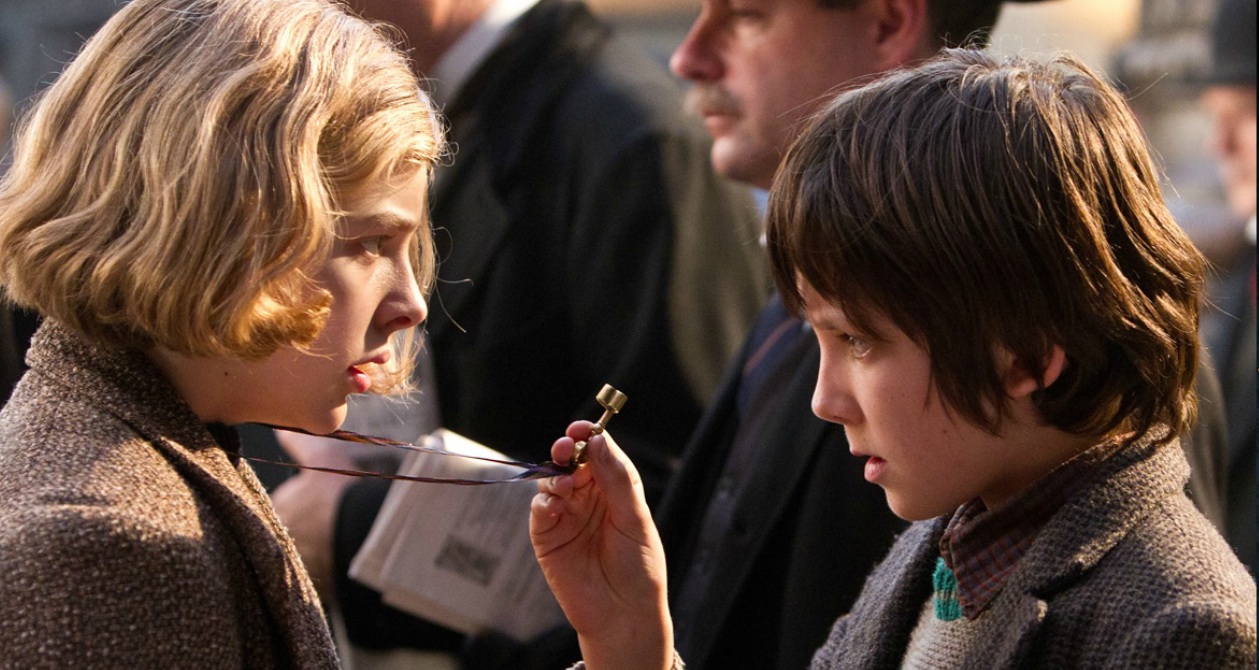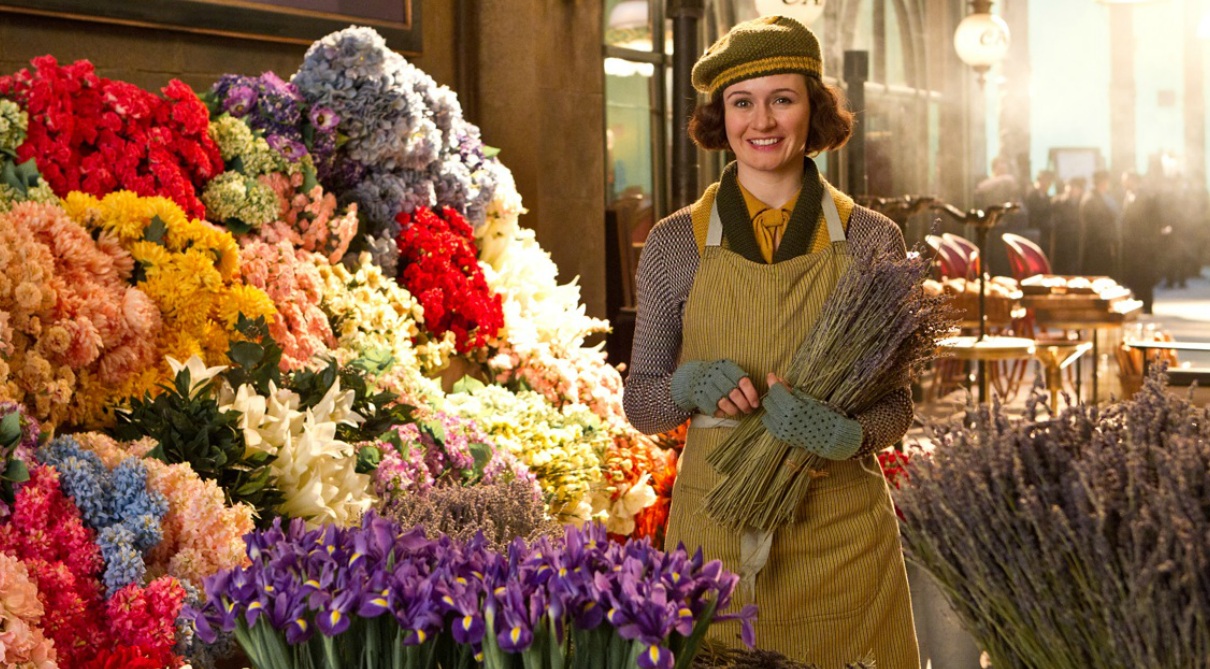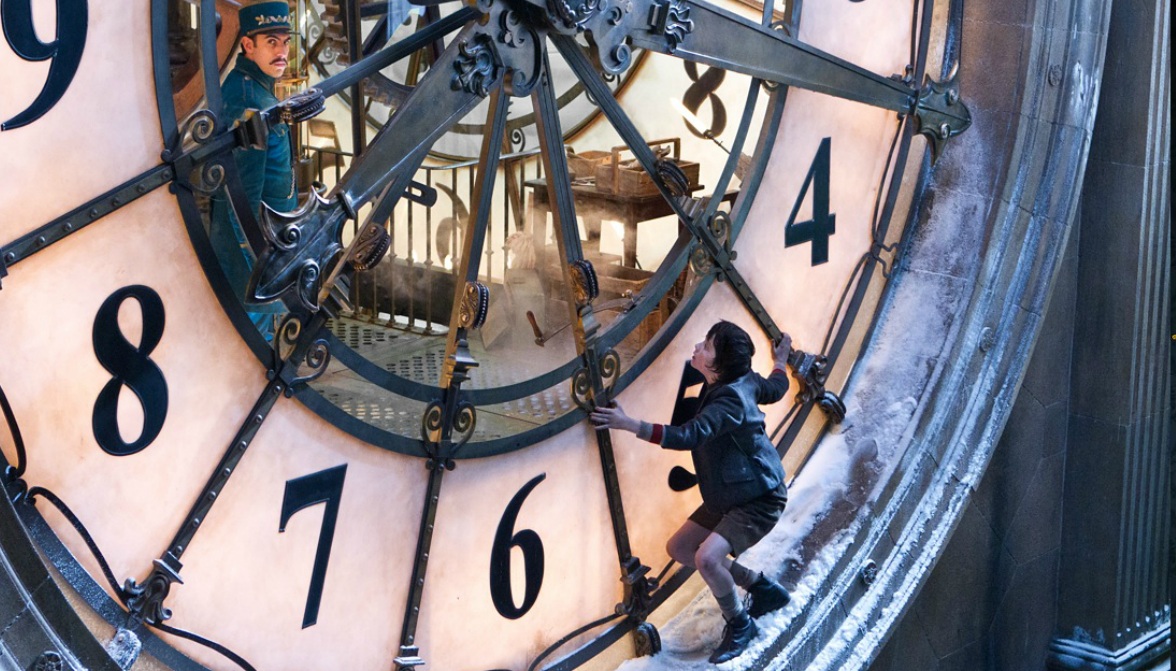|
In the 1930s, a young boy named Hugo (Asa Butterfield)
lives in
the tunnels of a Paris train station. He comes from a family of
clockmakers,
including his father (Jude Law), who died in an accident. Hugo spends
much of
his time stealing from people in the station and avoiding the crippled
inspector (Sacha Baron Cohen) and his dog. One day Hugo is caught by
the crusty
old toyshop owner Georges Méliès (Ben Kingsley), who was once a silent
filmmaker. He takes Hugo's notebook, which has cryptic drawings in it
and
refuses to give it back unless he works for him in the store. Hugo
needs the
notebook to unravel the secrets of the automaton that his father left
him.
Aiding him in his quest to discover the purpose of the machine is
Georges'
goddaughter Isabelle (Chloë Grace Moretz). They have many adventures,
including
sneaking into a cinema to watch silent films together.

There is no such thing as a kids film anymore. More
accurately,
as the quality of animation has steadily risen, major studios like
Pixar have
matched their technical achievements with narratives that are
emotionally and
humanly complex. Pixar has openly stated that they don't make films for
children, they make films for everyone. Although Hugo
is not an animated film, it reminded me pleasantly of this
rather old fashioned attitude to cinema. This is a return to
traditional family
entertainment at its most charming, intelligent and beautiful. It is
also one
of Martin Scorsese's most unique and personal films, one that speaks to
multiple
generations and reminds us that he is still a master craftsman. It is
important
to consider some of the autobiographical details that attracted
Scorsese to the
film. As a child in the early 1940s, Scorsese was often kept in
isolation because
he suffered from terrible asthma. The only accessible activity for him
was to
be taken to the cinema to watch movies. These are important staples in Hugo's narrative and its formal
composition.

The opening establishment shots of the film are
sumptuous, overlooking
the Parisian rooftops littered with snowflakes. The ice is symbolic
because in
conjunction with Scorsese's subtle blue colour filters and dark
shadows, he
constructs a lonely vision of an isolated childhood, one that is spent
in dark,
steamy tunnels. By contrast, the station is filmed with brighter tones
and is more
spacious to accommodate the mass number of bodies pouring through. Many
of
these characters are dressed with muted, grey and brown costumes to
reflect the
sombre tone of the period. Scorsese is a director of great experience
and one
who continually associates stylisation with purpose and effect. This
extends
from his fine attention to detail for the period and into the third
dimension.
The 3D technology is not an afterthought but employed to accentuate the
height
and the depth of rooms. It enhances not only the shape and the
character of the
architecture but it also increases our involvement with these spaces
too.

With a screenplay by John Logan, adapted from Brian
Selznick's novel,
the narrative strikes a perfect balance for both adults and children,
further
blurring the lines between what is a kids film and pure family
entertainment. The
film is classically told, meaning that it unfolds at a very leisurely
pace.
This will be a testing element for small children (and some adults) but
it is also
highlights one of the most satisfying elements of the narrative: its
patience.
Scorsese takes such care with what is essentially a mystery but an
extremely
comprehensible one. We are hooked by who these fascinating characters
are and
then with each act their stories and motives unfold with utter clarity.
It
really makes each piece of the puzzle more rewarding and it is further
aided by
strong levels of continuity between each thread. Although the film is
pegged as
a family film, it is one concerned by loss, failure and repressed
memories. Yet
it is also a celebration of our artistic sensibilities that make us
human. The
film argues, quite rightly, that humans are systematic and mechanical
in their
habits and flaws. Yet unlike machines, humans have personal thoughts
and there
is often a desire to not only change our lives but to celebrate and
share our
experiences through modern inventions, like cinema. Is there a more
beautiful, life-affirming message than that? Scorsese's love for cinema and the way
that it
unites people is to me a deeply moving quality, one that comes out most
poignantly through his seamless mixture of silent films and 3D
technology. The
combination of the two is further evidence of cinema's irrefutable
sustainability.
The humanity, crucial to the film's messages, is provided
by a
cast of distinct, colourful characters and faultless performances.
Butterfield
is a revelation as Hugo, a completely natural little boy, with such
fierce
determination and backbone. Yet it is the sense of vulnerability, loss
and
emotion that makes him a sympathetic and compelling lead of great
conviction.
His partner in crime Chloë Grace Moretz is entirely different but no
less
appealing. Her warmth and her enthusiasm for adventure, courtesy of her
expressive face, are infectious and irresistible qualities. She's a
wonderful
pint-sized sidekick. Kingsley is once again all class. The strength of
his
performance is that he is so cold early on and yet by the end of the
film, as
we come to understand his existence, he moves us more than we could
ever expect
through his heartfelt transformation. Sasha Baron Cohen and the
delightful
Emily Mortimer, playing a florist, share a sweet subplot together and
he's surprisingly
restrained for once. Although I could have done with perhaps one less
chase
scene and a few more moments with her character as she has the most
endearing
presence with almost any film she is in. These performances are
collectively
linked together by loss, meaning that Hugo
is dark, sometimes sad but eventually uplifting; a family film built on
the
oldest and newest techniques of storytelling. It is in every sense a
film for everyone.
|